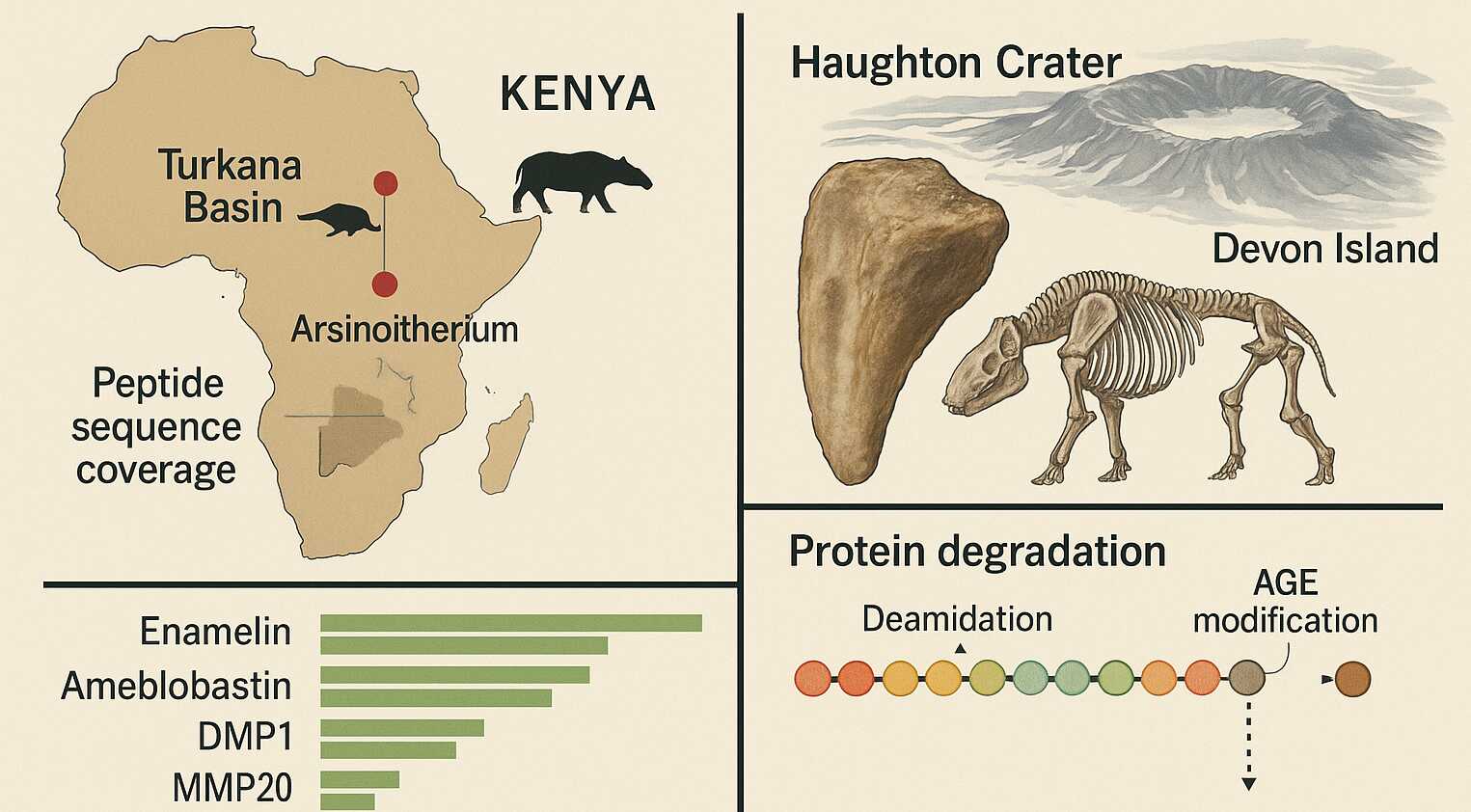Research Highlight - Ancient Proteins Push Boundaries of Evolutionary Research into Deep Time
Two groundbreaking studies published this week in Nature showcase the power of palaeoproteomics—recovering and analyzing ancient proteins—to unlock evolutionary secrets once thought forever lost to time.

In the first study, Daniel Green and colleagues report the oldest diverse enamel proteomes ever recovered, extracted from fossil teeth up to 18 million years old in Kenya’s Turkana Basin. Using mass spectrometry, they identified structural proteins like enamelin, ameloblastin, and dentin matrix acidic phosphoprotein (DMP1) in rhinos and proboscideans (ancestors of elephants). These proteins survived in fossil enamel despite the extreme tropical heat, offering insights into ancient environments and mammalian lineages previously beyond the reach of DNA analysis.
The researchers also documented molecular damage patterns—like advanced glycation end-products (AGEs) and amino acid deamidation—that help confirm the authenticity and antiquity of these molecules. Remarkably, they even recovered peptide fragments from a 29-million-year-old Arsinoitherium, a now-extinct large mammal from the Oligocene, pushing back the frontier of molecular preservation in warm climates.
Meanwhile, a second study led by Ryan Paterson explores a 21–24-million-year-old rhinoceros tooth from the High Arctic. Despite its age, the cold climate helped preserve an unusually rich set of enamel proteins. This allowed researchers to place the specimen—Epiaceratherium—on a time-calibrated evolutionary tree, making it the earliest fossil from which subordinal-level phylogenetic relationships have been confidently reconstructed using protein sequences.
Their analysis supports a younger-than-expected divergence between the two major rhino lineages—Elasmotheriinae (like the “Siberian unicorn”) and Rhinocerotinae—challenging earlier models based solely on morphology. The preservation of this Arctic specimen may designate the Haughton Crater site as a new palaeomolecular lagerstätte—a fossil site with exceptional molecular preservation.
Together, these studies demonstrate that ancient protein analysis is revolutionizing evolutionary biology, extending our molecular reach well beyond the limits of DNA, and deep into the Cenozoic era.
————
References:
Green, D.R., Uno, K.T., Miller, E.R. et al. Eighteen million years of diverse enamel proteomes from the East African Rift. Nature (2025). https://doi.org/10.1038/s41586-025-09040-9
Paterson, R.S., Mackie, M., Capobianco, A. et al. Phylogenetically informative proteins from an Early Miocene rhinocerotid. Nature (2025). https://doi.org/10.1038/s41586-025-09231-4
File Download: